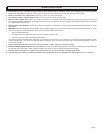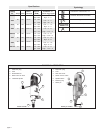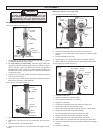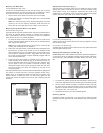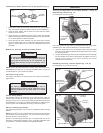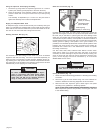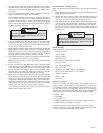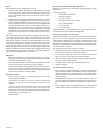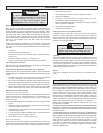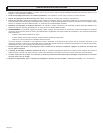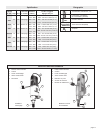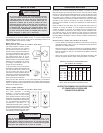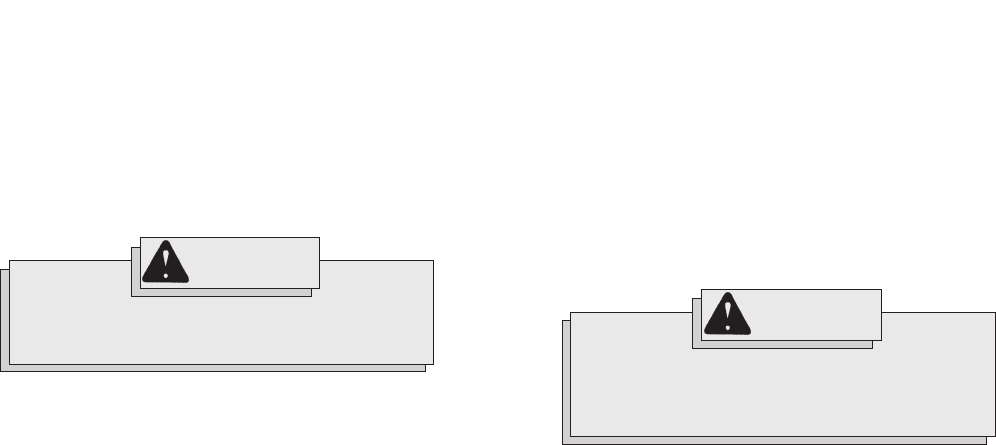
page 11
Diamond Coring
Factors that influence diamond core performance:
• Amount of coolant
• Dymorig rigidity
• Dymorig condition
• RPM of drill motor
• Feed pressure applied to bit by operator
• Amount of steel
• Size of embedded steel
• Age of concrete
• Aggregate (size, type, hardness, abrasiveness)
• Type of sand–manufactured vs. river (natural)
• Operator technique
• Operator care
• Bit runout
9. Monitor the water flow (see "Diamond Coring"). Generally, water
should flow at a rate of approximately one to two gallons per minute.
If the water flow is too heavy, the two holes in the water swivel
housing will leak. If that happens, reduce water flow. Water flow is
adequate when the water and cuttings are flushed in a circular
pattern about 1/2" around the bit. Keep the work area dry.
10. When the cut is complete, keep the drill motor ON and rotate the
handle clockwise to remove the bit. The bit may become stuck in the
hole if you turn the motor OFF before the bit is completely removed.
Once the bit is removed from the work surface, turn the motor OFF.
Tighten the cradle lock handle. Unplug the meter box from the power
supply before removing the vacuum pump to prevent accidental
starting of the motor when the vacuum pump is released.
If you are using a vacuum pump, unplug it and open the vacuum
release valve to release the vacuum.
4. Connect the water hose to the Dymodrill water shut-off valve and to
the water supply. Make sure the seal is watertight. Use a standard
garden hose if you require additional length. Set up a water collec-
tion system.
5. If you are using a vacuum system, read the instructions for specific
setup in "Assembling & Using a Vacuum System".
Do not continue the following steps until the vacuum gauge reads at
least 20 inches of mercury vacuum. Never operate the Dymodrill if
the gauge reads less than 20 inches (see "Mothods for Securing
Equipment to Work Surface"). Always monitor the vacuum gauge
during coring. If water collects in the vacuum pump filter jar, empty it
to prevent damage to the pump.
To reduce the risk of injury, do not operate the
Dymorig if the gauge reads less than 20 inches of
mercury vacuum.
Retrieving Cores and Deep Coring
When coring holes that are longer than the core bit, follow the steps
below.
1. Begin coring the hole as usual. When you have cored to the length of
the bit, stop the Dymodrill motor.
2. Remove the core by driving a chisel or slender wedge into the cut
between the core and the work surface. You may also use a special
core tongs, bent wire or anchor bolts to remove the core.
3. After removing the core, reinsert the bit or use a bit extension and
continue coring (see "Accessories"). Removing cores with diam-
eters greater than twice their length can be difficult. One method to
remove such cores is to first break the core into smaller pieces and
then remove the pieces. Electric hammers and chisels are ideal for
breaking cores.
WARNING!
6. Turn the Dymodrill motor ON. Turn the water on so it flows freely
through the water shut-off valve (see "Supply an Adequate Water
Flow"). Turn the valve clockwise to increase water flow and coun-
terclockwise to decrease water flow.
7. While holding the handle, slightly loosen the cradle lock handle and
slowly rotate the handle to lower the bit into the workpiece, applying
steady, even pressure. To help reduce bit wandering, always use a
light load to start the hole and wait for the tip of the bit to penetrate
the work surface completely before increasing the load.
8. Use sufficient pressure so the bit cuts constantly. Use the ammeter
on the meter box as a guide for proper pressure.
NOTE: If the rig shifts during coring, stop the motor, reposition the rig
and resume coring.
WARNING!
When coring through floors, cores generally
drop from the bit. To reduce the risk of injury,
provide proper protection for people and prop-
erty below the coring area.
Operator Technique
Core with consistent, firm feed pressure. Do not subject the bits to
sudden impacts. Uneven feed rate cracks diamonds. Low feed pres-
sure polishes diamonds, slows penetration and contributes to bit glaz-
ing. High feed pressure can overload the drill motor or can cause dia-
monds to pull out prematurely, particularly when coring embedded steel.
Make the bit work, but do not try to jam the bit through the material.
If vibration occurs:
1. Stop drilling.
2. Turn motor off.
3. Check for loose bolts, nuts and gib screws. Tighten if required.
4. Check for bit runout. Replace if required.
If vibration continues to occur, remove the core and loose material.
If vibration continues to occur after attempting these measures, return
the rig to the nearest MILWAUKEE service facility.



